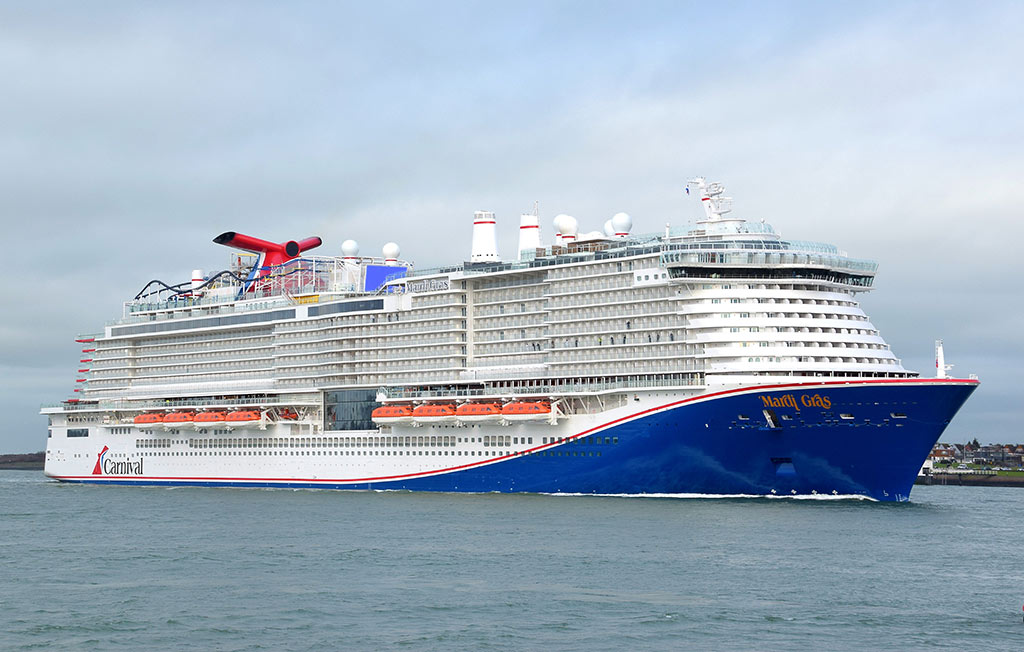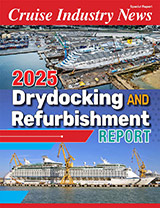Going from 1,800 passengers to over 5,000, Carnival Cruise Lines classes of newbuilds have evolved since the Holiday class debuted in 1985.
We take a look at the classes of Carnival ships over the years:
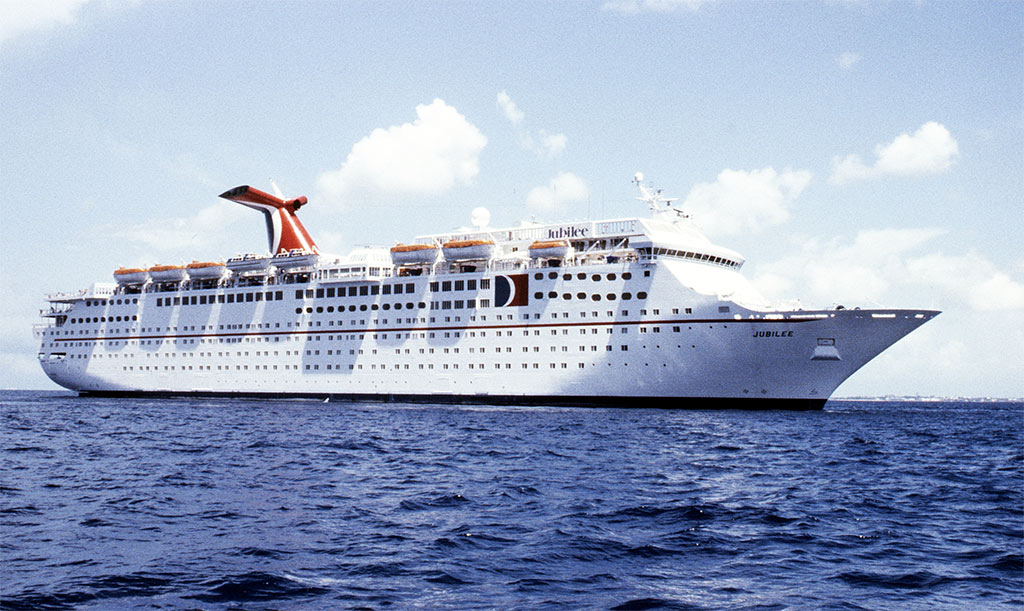
Holiday Class
Shipyard: Aalborg Værft (Denmark) and Kockums Varv (Sweden)
Average cost: $150 million
Tonnage: 47,262
Length: 223 meters
Width: 28 meters
Capacity: 1,800 passengers
Ships:
– Holiday (1985 – 2009);
– Jubilee (1986 – 2004);
– Celebration (1987 – 2008).
After launching a single newbuild, the Tropicale, in 1982, Carnival developed its first class of newbuilds with the Holiday Class. An enlarged and revamped version of the company’s first newbuild, the Holiday served as the prototype for the class and entered service in 1985. Over the next two years, another two ships, Jubilee and Celebration, were built Sweden, completing the series.
With interiors and public areas designed by the architect Joe Farcus, the vessels were famous for their amount of open deck space and an internal promenade filled with lounges and bars.

Fantasy Class
Shipyard: Kvaerner Masa-Yards (Finland)
Average cost: $277 million
Tonnage: 70,367
Length: 261 meters
Width: 31 meters
Capacity: 2,040 passengers
Ships:
– Fantasy (1990 – 2020);
– Ecstasy (1991 – present);
– Sensation (1993 – present);
– Fascination (1994 – 2020);
– Imagination (1995 – 2020);
– Inspiration (1996 – 2020);
– Elation (1998 – present);
– Paradise (1998 – present).
Spanning eight ships, the Fantasy Class dominated the Carnival Cruise Line fleet. Built in Finland, the vessels share many features of the Holiday Class, but are significantly larger.
The Fantasy was one of the very first ships to feature a large multi-deck atrium, which later became common on vessels built in the 1990s and early 2000s.
The Paradise entered service as the first completely non-smoking cruise ship.
Designed by Joe Farcus, the ships had an interior design that would later become a Carnival trademark. Each one of the eight vessels had a different theme.
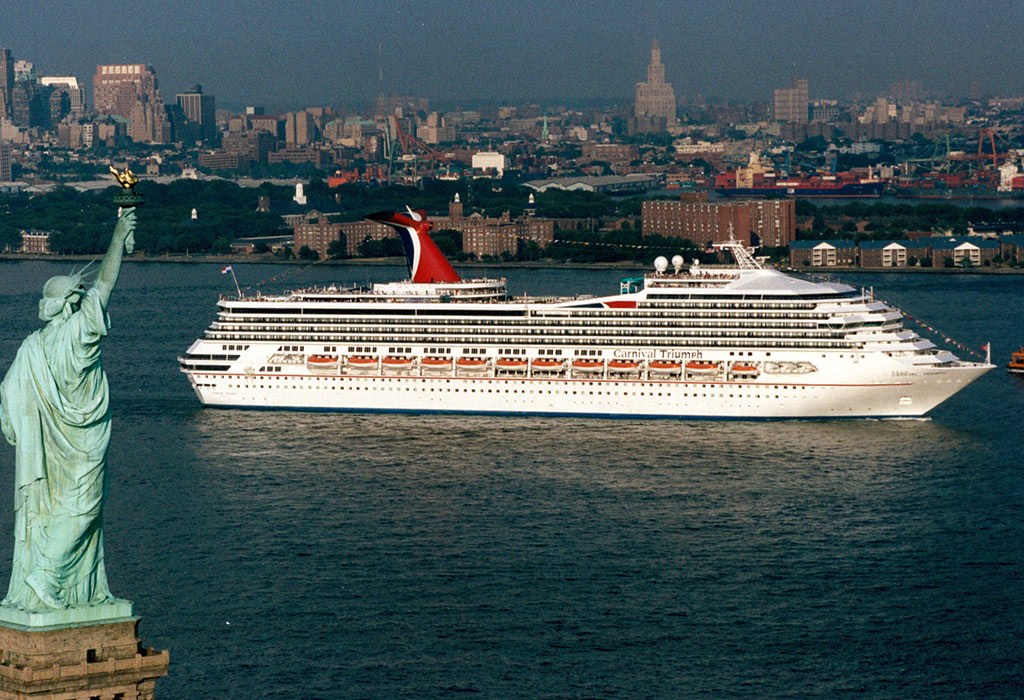
Destiny/Triumph Class
Shipyard: Fincantieri (Italy)
Average cost: $400 million
Tonnage: 101,509
Length: 272 meters
Width: 35 meters
Capacity: 2,758 passengers
Ships:
– Carnival Destiny/Sunshine (1996 – present);
– Carnival Triumph/Sunrise (1999 – present);
– Carnival Victory/Radiance (2000 – present).
With an entirely new design, the Destiny Class was the first built for Carnival at Fincantieri.
In association with the Italian shipyard, the company designed the then biggest cruise ship in the world, being the first to surpass the 100,000 tons mark. After entering service in 1996, the Carnival Destiny was followed by two slightly larger sisters, the Carnival Triumph and the Carnival Victory.
The Destiny class ships featured lots of balcony cabins and modern features, such as a pool deck with a retractable roof.
From 2013 to 2021, the three vessels were modernized in Europe, with the addition of new cabins and the redesign of all public rooms onboard.
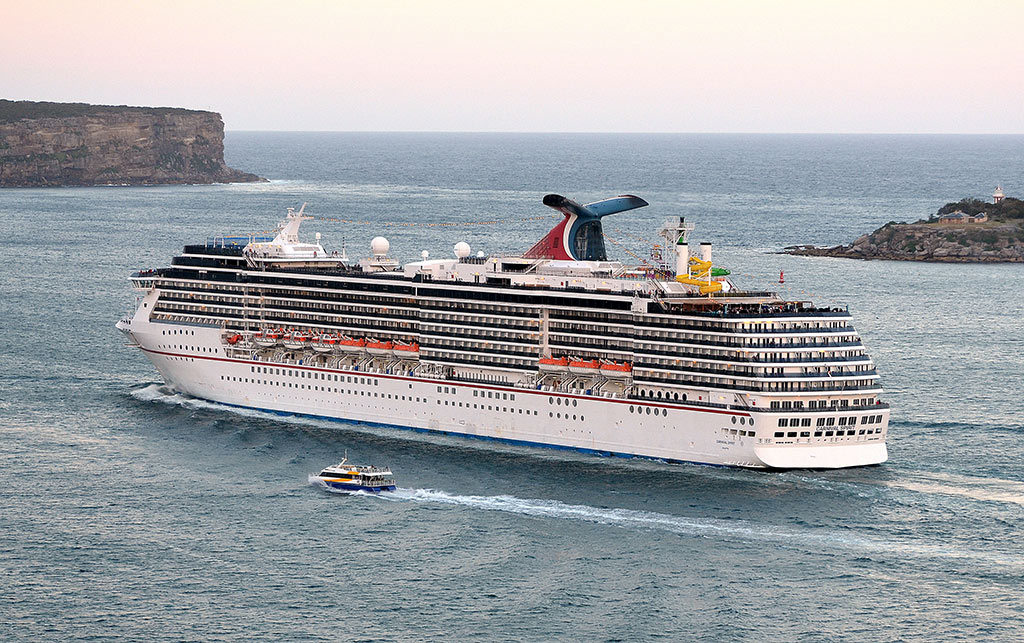
Spirit Class
Shipyard: Kvaerner Masa-Yards (Finland)
Average cost: $375 million
Tonnage: 88,500
Length: 293 meters
Width: 32 meters
Capacity: 2,100 passengers
Ships:
– Carnival Spirit (2001 – present);
– Carnival Pride (2001 – present);
– Carnival Legend (2002 – present);
– Carnival Miracle (2004 – present).
Another entirely new design, the Spirit Class was built in Finland by Kvaerner Masa-Yards. Designed to travel to a wider array of destinations, the ships in this class were built to the Panamax specs, allowing them to pass through the original Panama Canal.
Bringing back many features of the Destiny Class, the vessels have multi-deck atriums, a glass-enclosed pool deck and a large number of cabins with private balconies.
The design was highlighted by the first specialty restaurants and wedding chapels in the fleet.
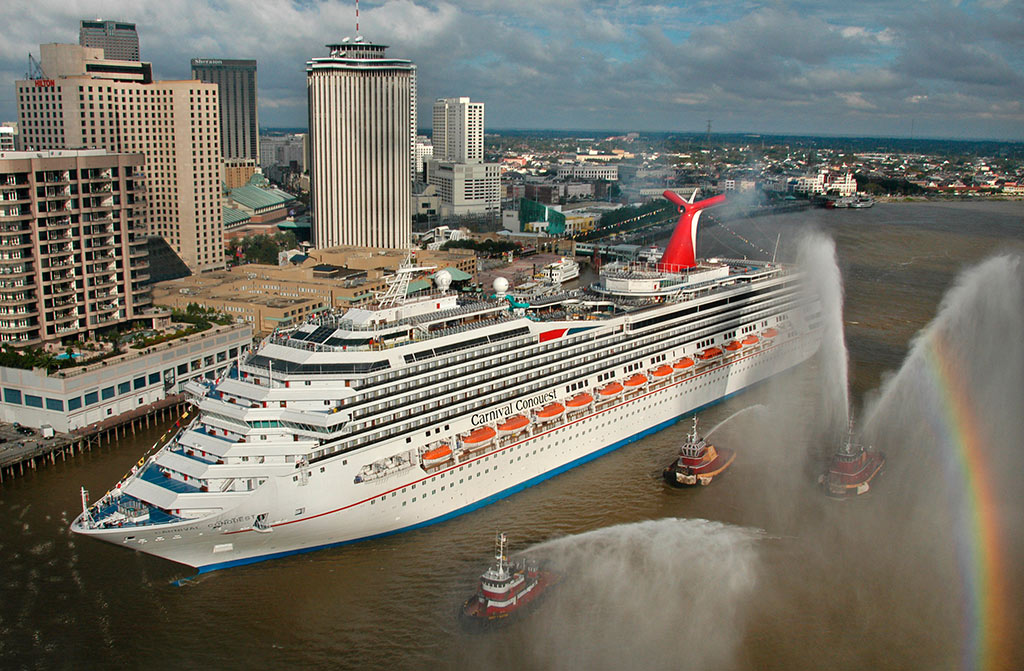
Conquest Class
Shipyard: Fincantieri (Italy)
Average cost: $500 million
Tonnage: 110,000
Length: 290 meters
Width: 35 meters
Capacity: 2,974 passengers
Ships:
– Carnival Conquest (2002 – present);
– Carnival Glory (2003 – present);
– Carnival Valor (2004 – present);
– Carnival Liberty (2005 – present);
– Carnival Freedom (2007 – present).
The Conquest Class includes five ships, all built in Italy by Fincantieri in the early 2000s.
The vessels are essentially lengthened and enlarged versions of the Destiny Class ships, which were also built at the same shipyard.
18 meters longer, the ships had expanded public areas and additional cabins.
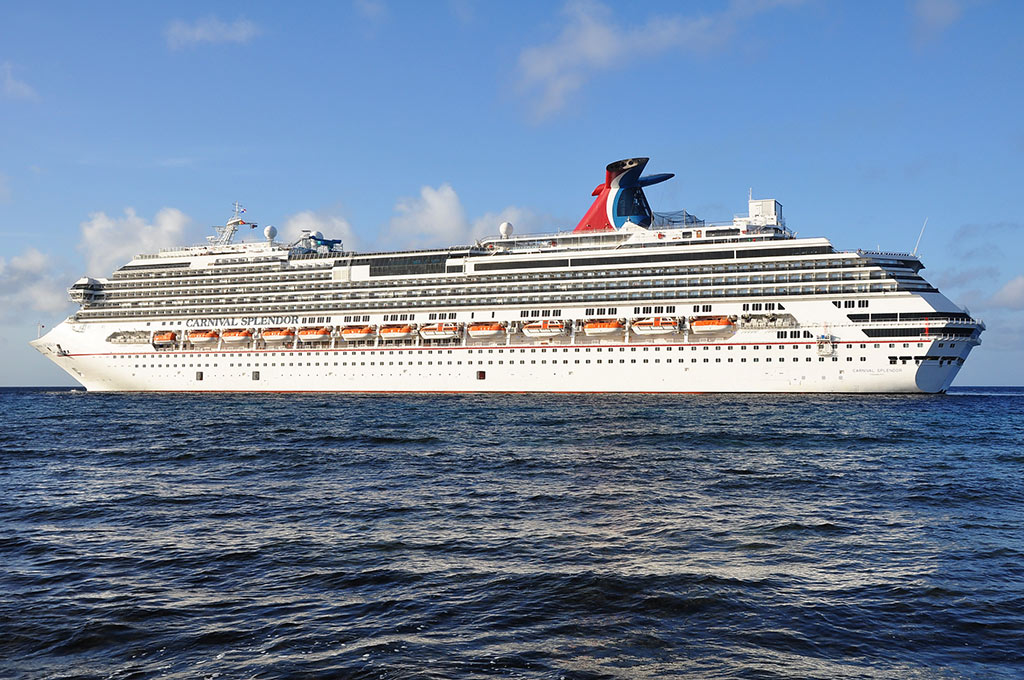
Splendor Class
Shipyard: Fincantieri (Italy)
Average cost: $500 million
Tonnage: 113,300
Length: 290 meters
Width: 35 meters
Capacity: 3,000 passengers
Ships:
– Carnival Splendor (2008 – present).
Built in Italy, the Carnival Splendor shares the designed of the Conquest Class but has modified upper decks.
The vessel has a larger pool deck and a larger spa, which covers 2,000 square meters area.
The number of cabins was also increased, bringing the ship capacity up to 3,000 passengers (double occupancy).
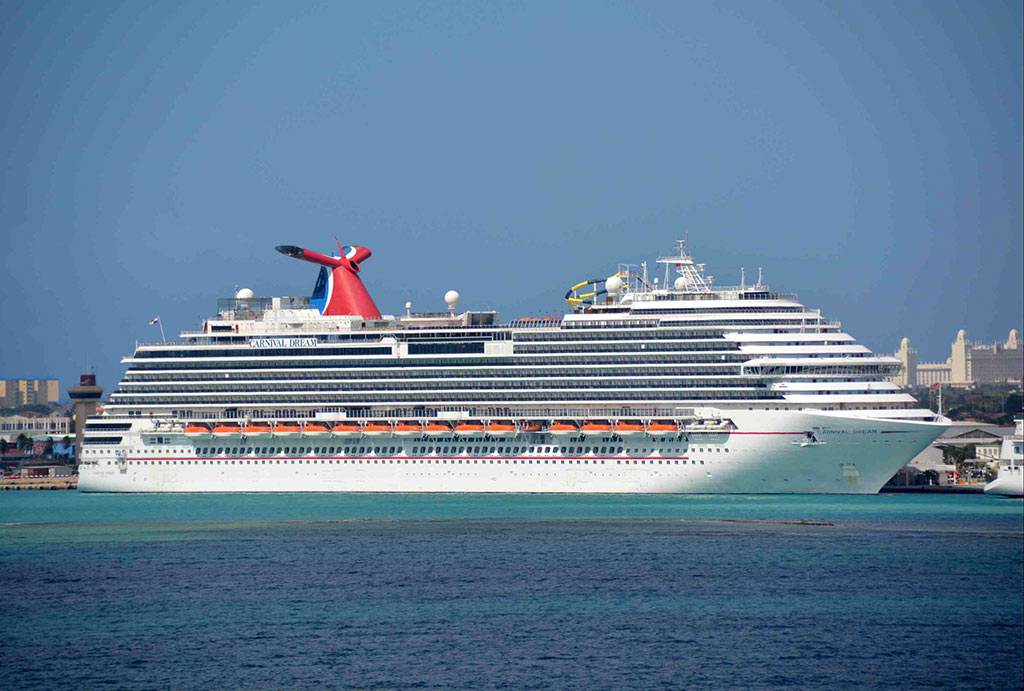
Dream Class
Shipyard: Fincantieri (Italy)
Average cost: $714 million
Tonnage: 130,000
Length: 306 meters
Width: 37 meters
Capacity: 3,650 passengers
Ships:
– Carnival Dream (2009 – present);
– Carnival Magic (2011 – present);
– Carnival Breeze (2012 – present).
Ordered in 2005, the Carnival Dream is the prototype ship for the Dream Class. At the time it was the biggest cruise ship to be built in Italy.
The vessel was said to build upon the Splendor Class design but saw several significant modifications.
A highlight of the design is the outdoor promenade deck, which follows the entire length of the ship and includes outdoor lounges and cafes. Suspended whirlpools are also located in the area, which was designed as an alternative to the ship’s pool decks. The vessel was also the first in the fleet to feature a multi-slide waterpark and a wider variety of specialty restaurants.
Another change comes in the external layout that was modified to allow for more balcony cabins.
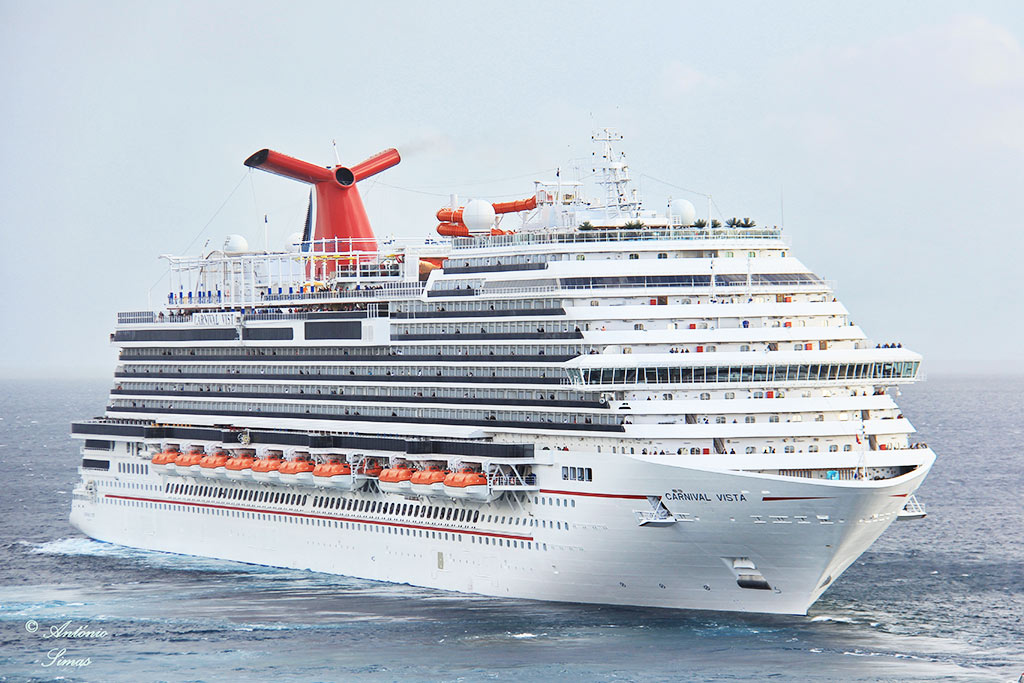
Vista Class
Shipyard: Fincantieri (Italy)
Average cost: $780 million
Tonnage: 135,000
Length: 322 meters
Width: 37 meters
Capacity: 4,000 passengers
Ships:
– Carnival Vista (2016 – present);
– Carnival Horizon (2018 – present);
– Carnival Panorama (2019 – present).
With three ships in the class, the Vista Class is larger than its predecessors.
The vessels in this class introduced several new features, including the first IMAX theaters at sea and the SkyRide a twin-track suspended bike course.
Another new feature are the Havana Cabins. Carnival’s first stateroom enclave, Havana includes a private pool deck and lounge, and lanai balconies. The ships also introduced new specialty food and beverage options and the Sky Zone trampoline park, which is only available on the Carnival Panorama.
Excel Class
Shipyard: Meyer Turku (Finland)
Average cost: $950 million
Tonnage: 183,900
Length: 337 meters
Width: 42 meters
Capacity: 5,300 passengers
Ships:
– Mardi Gras (2020 – present);
– Carnival Celebration (2022).
With innovative features, including the environmentally-friendly LNG-fueled powerplants, the Excel class of ships is also the biggest ever to be built for the company.
The bigger size allowed Carnival to introduce several new attractions, including the new themed zones concept. Another highlight is BOLT, the first rollercoaster on a cruise ship.
Scheduled to enter service in May, the Mardi Gras is the first ship in the class.


